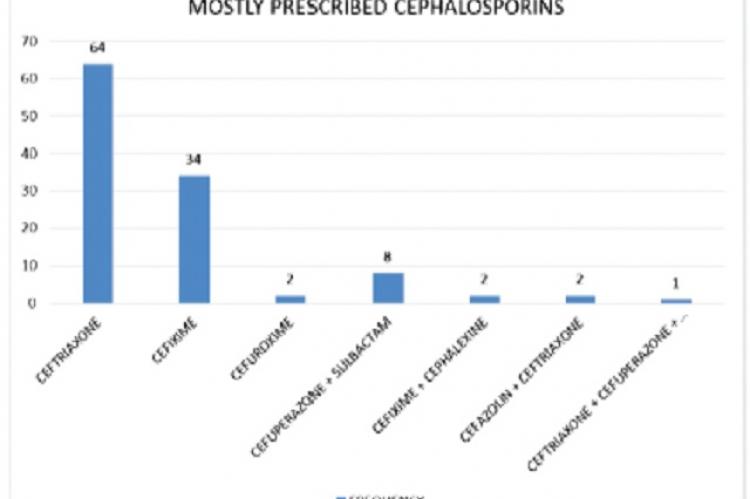Background: Urinary tract infection is defined as the presence of microorganism in the urine that cannot be accounted by contamination. First line treatment for UTI are antibiotics. Antibiotic stewardship is the coordinated intervention designed to improve and measure the appropriate use of antibiotic agents, by promoting the selection of optimal antibiotic drug regimen including dosing, duration of therapy and route of administration. Objective: The objective of the study was to analyze the prescribing pattern of antibiotic use in adult patients diagnosed with UTI and to assess the antibiotic resistance pattern in a tertiary care teaching hospital within a time period of six months. Methodology: A prospective observational study was conducted for a period of 6 months in Medicine and OBG department of Government Medical College, Kannur.. Adult patients (between 18 – 65 years) diagnosed with Urinary tract infection in Medicine and Gynaecology department both inpatient and outpatient were included in the study. Results Here we came to a conclusion that females are much prone to urinary tract infections and it is more observed in the age group56-65 years. The third generation cephalosporin’s (53.8%) were the most widely prescribed and Ceftriaxone (30.5%) was the mostly preferred antibiotic for UTI. Most of the antibiotics were prescribed without culture and sensitivity reports. 17.14% initial antibiotic therapy became ineffective due to the lack of culture and antibiotic sensitivity test. This may lead to antibiotic resistance and therefore the patients were switched on to more effective antibiotics (dual therapy). Conclusion: These shows the need for antibiotic stewardship program in the hospital for the rationale use of antibiotics thereby decreasing the resistance and promoting cost effective therapy and measures to prevent ADR associated in UTI.
View:
- PDF (523.72 KB)


